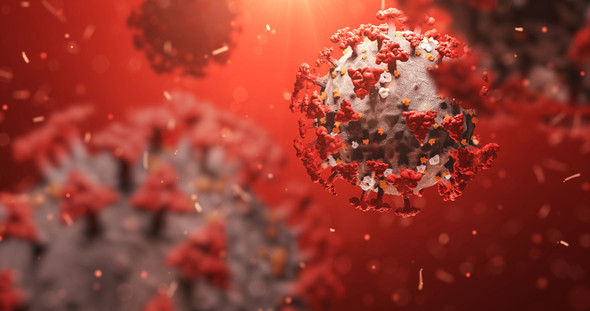Description
SARS-COV-2 MEMBRANE-ENVELOPE FUSION PROTEIN, HIS-TAG (E. COLI)
SARS-CoV-2 Membrane-Envelope fusion protein is a recombinant antigen manufactured in E. coli and containing the full-length Membrane (M) and Envelope (E) proteins, fused together (no linker). SARS-CoV-2, previously known as the 2019 Novel Coronavirus (2019-nCoV), causes the pandemic COVID-19 disease.
PRODUCT DETAILS – SARS-COV-2 MEMBRANE-ENVELOPE FUSION PROTEIN, HIS-TAG (E. COLI)
- SARS-CoV-2 Membrane-Envelope fusion protein.
- Recombinant protein manufactured in E. coli cells with >90% purity.
- Contains full-length Envelope (E) and Membrane (M), with C-term 6xHis-tag.
- Presented in PBS, pH7.8
BACKGROUND
Coronaviruses (CoVs) are enveloped viruses with a positive sense, single-stranded RNA genome. They have large genome sizes ranging from 26 to 32 kilobases (kb) in length and infect humans causing disease to varying degrees. Seven different coronaviruses are known to infect humans. Four of these (HCoV-NL63, HCoV-229E, HCoV-OC43 and HKU1) usually cause mild common cold-type symptoms in immunocompetent people. However, the other three (SARS-CoV, MERS-CoV and SARS-CoV-2) can cause severe acute respiratory syndrome and have higher mortality. The 2002 SARS-CoV pandemic, which originated in China, resulted in 8,096 people infected and 774 deaths (9.6% CFR). The 2012 MERS-CoV pandemic infected 2,494 people causing 858 deaths (34.4% CFR). The much larger number of people infected in the SARS-CoV-2 pandemic and the rate at which the number increased has been cause for global concern (Rabi et al., 2020).
The coronavirus genome encodes four major structural proteins: the spike (S) protein, nucleocapsid (N) protein, membrane (M) protein, and the envelope (E) protein, all of which are required to produce a structurally complete viral particle. Although efficient SARS-CoV virus-like particle (VLP) production requires the combined expression of M, N, and E, co-expression of M and E are sufficient for VLP formation (Tseng et al., 2010). The membrane glycoprotein (E1 glycoprotein, Matrix glycoprotein, M) is an integral membrane protein involved in budding, which interacts with the nucleocapsid and S proteins (Opstelten et al., 1995; Narayanan et al., 2000). As a component of the viral envelope it plays a central role in virus morphogenesis and assembly via its interactions with other viral proteins. The M protein has dominant cellular immunogenicity and elicits a strong humoral response which suggests it would serve as a potential target in SARS-CoV vaccine design (Liu et al., 2010). The E protein is the smallest of the major structural proteins. During the replication cycle, E is abundantly expressed inside the infected cell, but only a small portion is incorporated into the virion envelope. E participates in viral assembly, release of virions and pathogenesis of the virus. The majority of the protein is localised at the site of intracellular trafficking, the ER, Golgi, and ERGIC, where it participates in CoV assembly and budding. Recombinant CoVs lacking E exhibit significantly reduced viral titres, crippled viral maturation, or yield propagation incompetent progeny, demonstrating the importance of E in virus production and maturation (reviewed in Schoeman and Fielding, 2019).
REFERENCES
- Liu et al. (2010). The Membrane Protein of Severe Acute Respiratory Syndrome Coronavirus Acts as a Dominant Immunogen Revealed by a Clustering Region of Novel Functionally and Structurally Defined Cytotoxic T-Lymphocyte Epitopes. The Journal of Infectious Diseases, Volume 202, Issue 8, Pages 1171–1180.
- Narayanan et al. (2000). Characterization of the coronavirus M protein and nucleocapsid interaction in infected cells. J Virol. 2000 Sep; 74(17):8127-34.
- Opstelten et al. (1995). Envelope glycoprotein interactions in coronavirus assembly. J Cell Biol. 1995 Oct; 131(2):339-49.
- Rabi FA, Al Zoubi MS, Kasasbeh GA, Salameh DM, Al-Nasser AD. SARS-CoV-2 and Coronavirus Disease 2019: What We Know So Far. Pathogens. 2020;9(3):E231.
- Schoeman and Fielding (2019). Coronavirus envelope protein: current knowledge. Virol J. 16: 69.
- Tseng YT, Wang SM, Huang KJ, Lee AI, Chiang CC, Wang CT. Self-assembly of severe acute respiratory syndrome coronavirus membrane protein. J Biol Chem. 2010;285(17):12862–12872.














